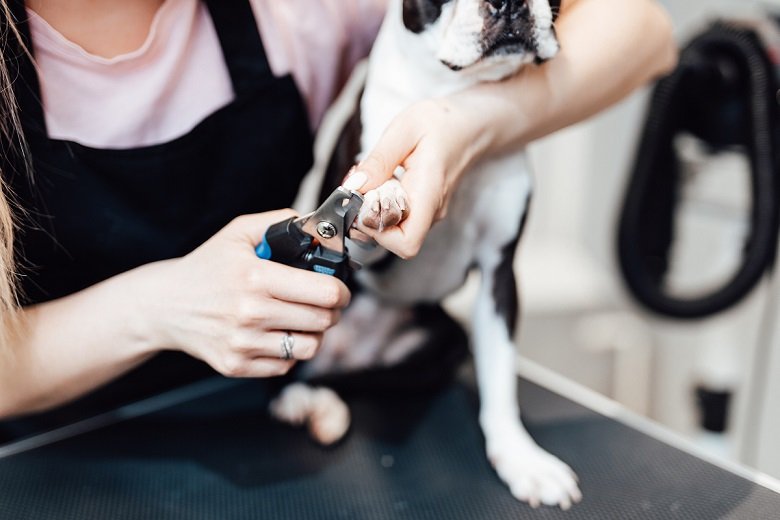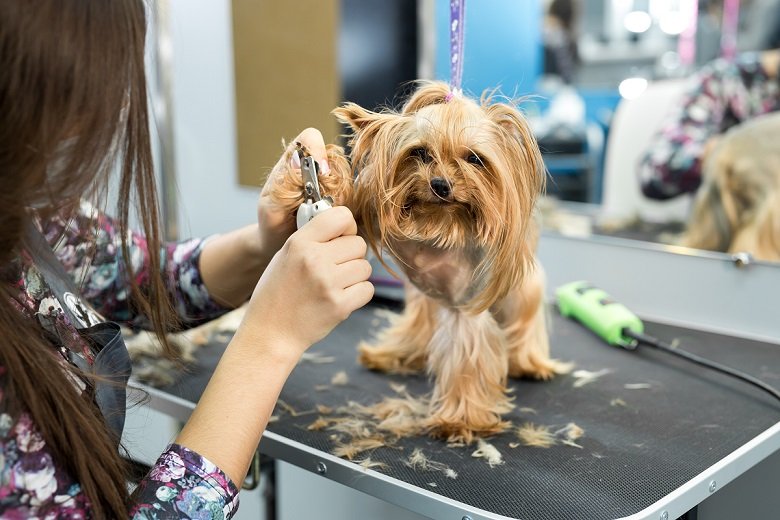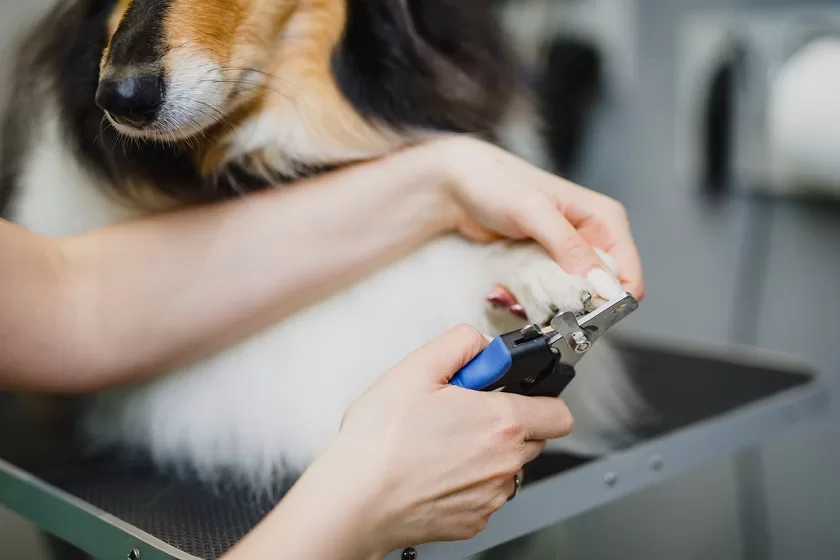How To Trim Your Dog’s Nails Without The Stress
Few dogs (and dog owners) have an immediate positive association with nail trimming time. However, before learning how to trim a dog’s nails it’s important to learn just why this is a necessary process in the first place. Nail trimming doesn’t have to be a stressful experience, and it’s all about learning how to work together with your dog to lower anxiety for you both.
Why Dogs Need Nail Trims
Our dogs’ wild ancestors didn’t need grooming appointments or sit-down nail trims on the living room floor, but there is reason for that. Wild dogs live outdoors, where they spend their days traversing over various types of outdoor terrains. This friction on their nails from coming into contact with hard surfaces like stone, gravel, concrete, asphalt, and rocky trails all day grinds down their nails for them, keeping them neat and tidy without need for manual nail trimming.
Domesticated dogs, however, spend most of their time indoors. This means their nails are more likely to come into contact with carpet, wood, linoleum, and other softer surfaces for the majority of the day. Additionally, domesticated dogs spend considerably more time lounging and relaxing than their wild cousins who spend most of their days running and hunting.
Long and poorly kept nails aren’t just an aesthetic problem. Nails that are long enough to touch the surface of the ground as the dog walks put force onto the nail bed with every step. This is uncomfortable for the dog and can become painful if the nails are allowed to continue growing without intervention. This excess pressure can then transfer to the joints in the toes, ankles, knees, and hips, leading to joint damage over time.

Pressure on the nails over time can also lead to splitting, cracking, and breaking of the nail. This may cause the quick inside of the nail to become exposed, leaving dogs susceptible to infection. If the nail continues to grow without splitting or breaking, it may grow back into the pad leading to extremely painful ingrown nails. Ingrown nails often require surgical intervention to repair, as well as antibiotics and medication as the paws fully heal.
When nails are left unkempt for years, they may even go onto effect the dog’s posture and spinal alignment. If running and walking is painful, the dog will try to compensate by redistributing their weight as they walk. This leads to uneven weight distribution over time which can then do damage to the muscle and skeletal systems in the back, hips, and neck.
While regular nail trims might be stressful in the moment, failing to trim a dog’s nails leads to far more stressful situations over time. When nails get unkempt and painful, dogs are less likely to welcome their paws being touched, making future trims even more difficult for you both.

How To Trim A Dog’s Nails
Knowing the importance of nail trims is just half of the battle, and the other half is learning just how to trim a dog’s nails in a stress-free and positive way. A few key tips to follow for trimming a dog’s nails without stress are:
- • Get them used to the nail clippers first – Dogs are naturally curious creatures and seeing a new device for the first time can be either a positive or a negative experience. To encourage the positive, get them used to seeing and investigating their nail trimmers first. Allow them to sniff the trimmers, see the trimmers, and get used to the presence of the trimmers before ever using them. When they feel comfortable in the presence of their trimmers or clippers, they’ll feel more comfortable at the prospect of the clippers going near their nails.
- • Get them used to having their paws touched – We scratch ears, pet heads, and rub bellies, but how often do you touch your dog’s paws? Likely not too often. If you’re touching a new part of their body, the dog is more likely to feel uncomfortable with the experience even if they otherwise trust you completely. Use a soothing voice and touch your dog’s shoulders, running your hand down the leg and to the paws. Apply gentle pressure to paw pads and nails, keeping a positive voice with plenty of positive words.
- • Get them used to the sound of the clippers – Most nail clippers make a small clipping sound when they’re pressed closed. While talking in a soothing voice, get your dog used to this sound by associating it with treats or other methods of positive reinforcement.
- • Associate the sound with paws being touched – Combining paw touching with the sound of the clippers is an important step. Touch your dog’s paws with one hand while you make the clipping sound with the other. If your dog doesn’t react, praise them with positive reinforcement. If your dog does react, continue the exposures a little at a time with a little treat encouragement.
- • Going forward with the trim – Once your dog is comfortable with the clippers, and comfortable with paw touching, it’s time to get to the trim. Hold the paw gently and go one toe at a time trimming only the very tip of the nail. Sticking to the tip of the nail is less likely to cause any discomfort and it gets dogs used to the sensation of a nail trim. You may not be able to tackle all their paws in a single session, and that’s okay. Once the dog begins getting antsy or uncomfortable, put the trim on hold until they calm down a little bit later.
It’s important to keep nail clippers sharp and strong, as dull blades can cause discomfort during nail trimming sessions. If you notice the clipping takes more force than usual, it’s time to sharpen the blades or replace the nail trimmers altogether. Keeping sharp blades ensures your dog has a more comfortable experience and therefore will be less likely to associate trimming sessions with stress or anxiety. With regular practice, nail trimming can positive experience for you and your dog.

